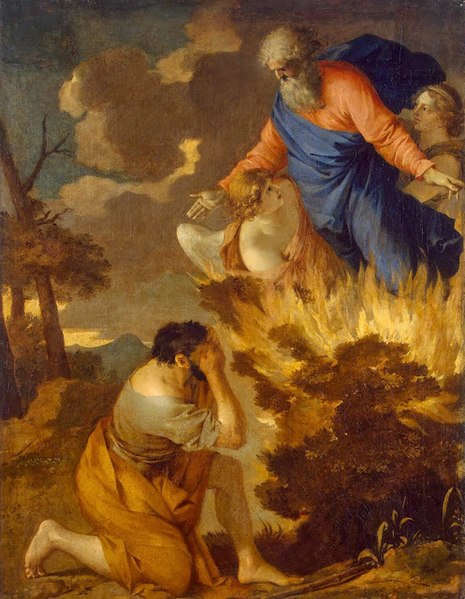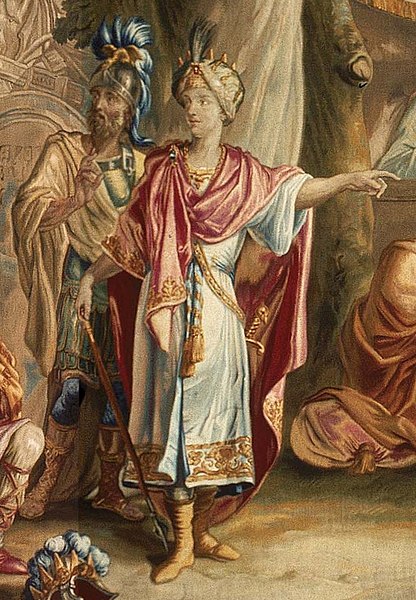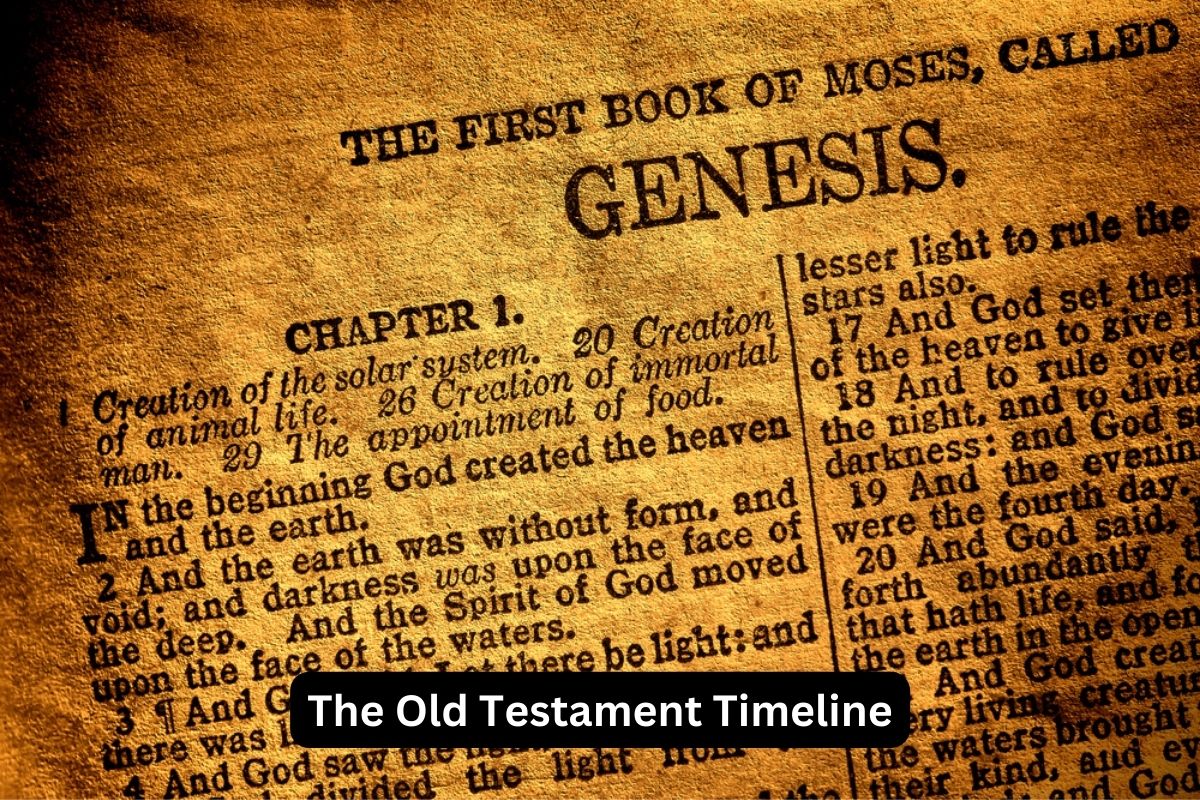The Old Testament, also known as the Hebrew Bible, is a collection of religious texts that are sacred to Judaism and form a significant portion of the Christian Bible.
It contains a wide variety of literary genres, including historical narratives, poetry, prophecy, and law codes.
The events and figures in the Old Testament span several centuries, and while it is challenging to establish precise dates for many of these events, here is a general timeline of key events and figures in the Old Testament:
| Period | Event/Figure | Approximate Date |
|---|---|---|
| Creation | Creation of the world | 4000-3000 BCE |
| Adam and Eve | 4000-3000 BCE | |
| Noah and the Flood | 2400-2300 BCE | |
| Tower of Babel | 2200-2100 BCE | |
| Patriarchs | Abraham | 2000-1800 BCE |
| Isaac | 1900-1700 BCE | |
| Jacob (Israel) | 1800-1600 BCE | |
| Joseph | 1800-1600 BCE | |
| Exodus and Mosaic Covenant | Moses and the Burning Bush | 13th century BCE |
| Exodus from Egypt | 13th century BCE | |
| The Ten Commandments | 13th century BCE | |
| Conquest of Canaan | Joshua | 13th century BCE |
| Period of the Judges | 12th-11th centuries BCE | |
| United Kingdom | Saul | 11th century BCE |
| David | 10th century BCE | |
| Solomon | 10th century BCE | |
| Divided Kingdom | Split into Northern and Southern Kingdoms | Late 10th century BCE |
| Various kings and prophets | 10th to 7th centuries BCE | |
| Babylonian Exile and Return | Fall of Northern Kingdom (Israel) to Assyria | 722 BCE |
| Fall of Southern Kingdom (Judah) to Babylon | 586 BCE | |
| Babylonian Exile | 586-538 BCE | |
| Cyrus the Great allows Jewish exiles to return to Judah | 538 BCE | |
| Rebuilding of Second Temple in Jerusalem | Completed around 516 BCE | |
| Ezra and Nehemiah | 5th century BCE | |
| Various prophets (Isaiah, Jeremiah, Ezekiel, etc.) | 8th to 6th centuries BCE |
Timeline of the The Old Testament
Creation of the World (4000-3000 BCE):
According to the Bible’s book of Genesis, God created the world in six days and rested on the seventh day. This narrative includes the creation of light, the heavens and the earth, plants, animals, and finally, the first humans, Adam and Eve.
Adam and Eve (4000-3000 BCE):
Adam and Eve are considered the first humans according to the Bible. They were created by God and placed in the Garden of Eden. They lived in a state of innocence until they disobeyed God’s command by eating the forbidden fruit from the Tree of Knowledge of Good and Evil.

Noah and the Flood (2400-2300 BCE):
The story of Noah’s Ark and the Great Flood is a well-known biblical narrative. God chose Noah, a righteous man, to build an ark and save himself, his family, and two of every kind of animal from a worldwide flood that was sent to cleanse the Earth of its corruption and wickedness.
Tower of Babel (2200-2100 BCE):
The Tower of Babel story is found in Genesis 11. It describes how humanity, after the flood, attempted to build a tower to reach the heavens.
Also Read: Chronology of the Bible
In response to their arrogance, God confused their languages, leading to the dispersion of people and the creation of different languages, which is often seen as the origin of diverse human cultures.
Abraham (2000-1800 BCE):
Abraham is a central figure in the Old Testament and is often regarded as the father of the Israelite people. God made a covenant with Abraham, promising to make his descendants into a great nation.
Abraham is known for his faith, willingness to sacrifice his son Isaac (an event averted by divine intervention), and for being a wanderer who journeyed to the land of Canaan.

Moses and the Burning Bush (13th century BCE):
Moses is one of the most prominent figures in the Old Testament. According to the book of Exodus, he encountered a burning bush that was not consumed by the fire on Mount Sinai.
Also Read: Chronological Order of the New Testament
During this encounter, God called Moses to lead the Israelites out of slavery in Egypt and to deliver them to the Promised Land. This event marks the beginning of the Exodus, a significant event in Jewish history.
Exodus from Egypt (13th century BCE):
The Exodus is a central event in the Old Testament, where Moses led the Israelites out of Egypt after a series of miraculous plagues that convinced Pharaoh to release them.
The journey of the Israelites from Egypt to Canaan, often referred to as the Wilderness Wanderings, is a major theme in the Old Testament, marked by the crossing of the Red Sea and the giving of the Ten Commandments at Mount Sinai.
The Ten Commandments (13th century BCE):
God gave the Ten Commandments to Moses on Mount Sinai. These commandments are a set of moral and ethical principles that form the basis of Judeo-Christian ethics.
They include directives such as “You shall not murder,” “You shall not commit adultery,” and “You shall not covet.” They are considered fundamental to the moral and legal framework of both Judaism and Christianity.
Joshua (13th century BCE):
After Moses’ death, Joshua took over as the leader of the Israelites. He is known for leading the Israelites in the conquest of Canaan, the Promised Land. Under Joshua’s leadership, the Israelites conquered Jericho and various other cities in the region. His story is recorded in the book of Joshua.
Period of the Judges (12th-11th centuries BCE):
The period of the Judges follows the conquest of Canaan and is marked by a series of charismatic leaders known as judges who ruled the Israelites.
The book of Judges in the Old Testament describes this era, which was characterized by a cycle of sin, oppression by neighboring peoples, repentance, and deliverance by the judges, including figures like Deborah, Gideon, and Samson.

United Kingdom (11th-10th centuries BCE):
This period in Old Testament history begins with the anointing of Saul as the first king of Israel around the 11th century BCE. It continues with the reigns of King David and his son King Solomon.
Saul: Saul was the first king of Israel, chosen by God to lead the people. However, his reign was marked by both successes and failures. His story is primarily found in the books of Samuel.
David: David is one of the most significant figures in the Old Testament. He is renowned for his victory over the giant Goliath, his musical talents, and his establishment of Jerusalem as the capital of Israel. David is also known for his Psalms, which are found in the Book of Psalms.
Solomon: Solomon, the son of David and Bathsheba, is celebrated for his wisdom and wealth. He is best known for building the First Temple in Jerusalem, which became the central place of worship for the Israelites. Solomon’s wisdom is exemplified in the famous story of the two women claiming to be the mother of the same baby.
Divided Kingdom (Late 10th century BCE):
After the death of Solomon, the United Kingdom split into two separate entities: the Northern Kingdom of Israel and the Southern Kingdom of Judah.
This division was due to political and religious differences. The division marks a significant turning point in Israel’s history, and it was accompanied by a succession of kings and prophets in both kingdoms.
Fall of the Northern Kingdom (Israel) to Assyria (722 BCE):
The Northern Kingdom of Israel, which included ten of the twelve tribes, was eventually conquered by the Assyrian Empire in 722 BCE. This event led to the exile of many Israelites and the gradual assimilation of others into foreign cultures.
Fall of the Southern Kingdom (Judah) to Babylon (586 BCE):
The Southern Kingdom of Judah, which included the tribes of Judah and Benjamin, fell to the Babylonians in 586 BCE. This event marked the destruction of the First Temple in Jerusalem and the Babylonian Exile, during which many Jews were taken captive to Babylon.

Babylonian Exile (586-538 BCE) and Cyrus the Great:
The Babylonian Exile refers to the period when the Jewish people were held in captivity in Babylon following the fall of Jerusalem. This exile lasted for several decades.
In 538 BCE, Cyrus the Great, the Persian king, issued a decree allowing the Jewish exiles to return to their homeland and rebuild the Second Temple in Jerusalem. This marked the end of the Babylonian Exile and the beginning of the post-exilic period.
Rebuilding of Second Temple in Jerusalem (Completed around 516 BCE):
After the Babylonian Exile, many Jewish exiles returned to their homeland following the decree of Cyrus the Great. One of their major endeavors was to rebuild the destroyed First Temple.
This process took several years and was completed around 516 BCE. The rebuilt temple, known as the Second Temple, became the center of Jewish worship and religious life.
Ezra and Nehemiah (5th century BCE):
Ezra and Nehemiah were prominent figures during the post-exilic period, and their stories are recorded in the biblical books bearing their names.
Ezra: Ezra was a scribe and priest who played a key role in the re-establishment of Jewish religious practices and the reading of the Torah (the Jewish law). He is often credited with organizing the compilation of the Torah into its final form.
Nehemiah: Nehemiah served as a cupbearer to the Persian king Artaxerxes I but received permission to return to Jerusalem to oversee the rebuilding of its walls and to help restore order in the city. His leadership was crucial in the restoration of Jerusalem as a secure and organized center for Jewish life.
Various Prophets (Isaiah, Jeremiah, Ezekiel, etc.) (8th to 6th centuries BCE):
The Old Testament includes the writings and prophecies of numerous prophets who lived and worked during different periods. Some of the most well-known prophets from this era include:
Isaiah: Isaiah is often referred to as the “Prince of the Prophets.” His book contains a mix of prophecies about the coming Messiah, messages of judgment, and words of comfort and hope.
Jeremiah: Jeremiah’s prophetic ministry was marked by his warnings to the people of Judah about the impending Babylonian invasion and exile. He also prophesied about a new covenant that God would make with His people.
Ezekiel: Ezekiel was a prophet and priest who was among the exiles in Babylon. His prophecies often included vivid and symbolic visions, including the famous vision of the valley of dry bones, which symbolized the restoration of Israel.
Other Prophets: The Old Testament features many other prophets, each with their unique messages and contexts. These prophets played a vital role in conveying God’s guidance and messages to the people of Israel during times of crisis and restoration.
Post-Exilic Period (5th to 4th centuries BCE):
The post-exilic period refers to the time following the return of Jewish exiles from Babylon. During this era, Jewish identity and religious practices were solidified, and the community faced various challenges and influences from surrounding cultures. The post-exilic period also saw the development of important texts and religious reforms that contributed to the shaping of Judaism as it is known today.
